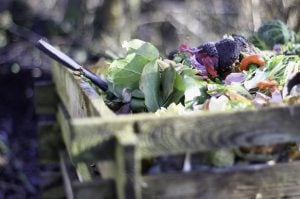Halving Australia’s Food Waste by 2030 – What’s Being Done and Why?
August 25, 2020

Our next blog is from Tess Henderson. Tess is a student at Deakin University, currently studying a Bachelor of Nutrition Science. She has a keen interest in nutrition, food and health and hopes to go on to study a Master of Dietetics. In addition to this, Tess is passionate about sustainability and finding ways she can incorporate more sustainable practices into her chosen field as well as her daily life.
Have you ever tossed old leftovers, soggy vegetables or unused scraps in the bin without a second thought? Have you ever stopped to think about where this food waste will end up?
You’re not alone if you haven’t. Many Australians don’t give throwing away food a second thought. That’s why 7.3 million tonnes of food were wasted in 2016-17 costing the economy on average $20 billion a year. It probably affects you more than you think, with households losing $2,200 – $3,800 a year from food waste. It’s a significant problem for our food system, as not only are massive amounts discarded by consumers, in addition, producers, distributors and retailers are also heavily contributing to the problem. Food waste is created at every step of the food supply system, with major losses from low quality or cosmetically imperfect produce, damage and contamination during transport and storage, as well as waste created during processing.
Clearly food waste is a large problem in Australia and it’s hurting the economy as well as our own pockets. But there are a few more reasons why you should possibly think twice about throwing that old sandwich in the bin.
Firstly, food waste negatively impacts upon the environment. All the food that gets thrown away ends up in landfill, where it begins to break down and emit methane, a harmful greenhouse gas.
Secondly, food waste can also have a negative effect on your health. If it is not disposed of correctly and efficiently, it can attract insects and rodents which are well known carriers of many diseases.
So, what is being done about this problem? Well, the Australian Government implemented the National food waste strategy: halving Australia’s food waste by 2030 in 2017. The program targets all stages of the food system in order to reduce food waste.
The strategy targets programs to reuse and redistribute food that would otherwise be wasted. It encourages businesses to cut down on food waste and incorporate technology to reduce the amount of waste produced. Additionally, the strategy aims to increase demand for potential food waste by repurposing it for other uses.

Compost garden
Source: https://pixabay.com/photos/garden-compost-nature-bio-ground-4725522/
So, all this aims to reduce food waste at a production and distribution level, but what can you do? The strategy itself aims to raise awareness of food waste and the damage it causes. There are plenty of ways you can cut down on your food waste and save some coin. This includes being proactive and thinking ahead when purchasing food. Is it more than enough and will it last until you’re ready to eat it? Purchase only what you’ll use and find creative ways to use up what you don’t, like investing in a compost bin.
Most importantly, share your knowledge with others. The more we each individually work towards reducing our impact, the bigger difference we can all make together.